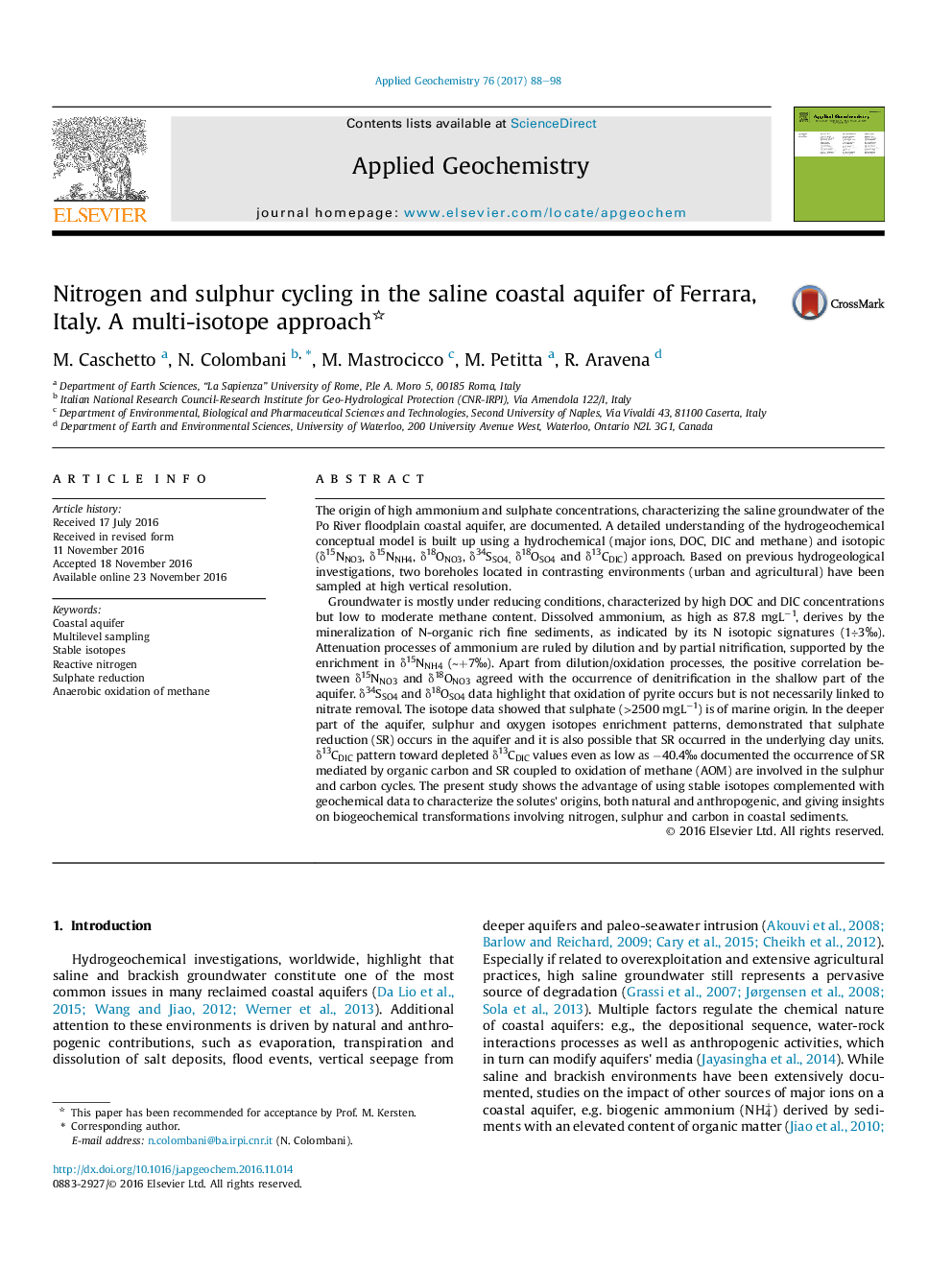| کد مقاله | کد نشریه | سال انتشار | مقاله انگلیسی | نسخه تمام متن |
|---|---|---|---|---|
| 5752620 | 1620215 | 2017 | 11 صفحه PDF | دانلود رایگان |
- A multi-isotope approach constrains solutes sources and their biogeochemistry.
- Pyrite oxidation and sulphate reduction occur in shallow and deep aquifer's parts.
- Sulphate is reduced by anaerobic oxidation of methane in deep part of the aquifer.
The origin of high ammonium and sulphate concentrations, characterizing the saline groundwater of the Po River floodplain coastal aquifer, are documented. A detailed understanding of the hydrogeochemical conceptual model is built up using a hydrochemical (major ions, DOC, DIC and methane) and isotopic (δ15NNO3, δ15NNH4, δ18ONO3, δ34SSO4, δ18OSO4 and δ13CDIC) approach. Based on previous hydrogeological investigations, two boreholes located in contrasting environments (urban and agricultural) have been sampled at high vertical resolution.Groundwater is mostly under reducing conditions, characterized by high DOC and DIC concentrations but low to moderate methane content. Dissolved ammonium, as high as 87.8 mgLâ1, derives by the mineralization of N-organic rich fine sediments, as indicated by its N isotopic signatures (1÷3â°). Attenuation processes of ammonium are ruled by dilution and by partial nitrification, supported by the enrichment in δ15NNH4 (â¼+7â°). Apart from dilution/oxidation processes, the positive correlation between δ15NNO3 and δ18ONO3 agreed with the occurrence of denitrification in the shallow part of the aquifer. δ34SSO4 and δ18OSO4 data highlight that oxidation of pyrite occurs but is not necessarily linked to nitrate removal. The isotope data showed that sulphate (>2500 mgLâ1) is of marine origin. In the deeper part of the aquifer, sulphur and oxygen isotopes enrichment patterns, demonstrated that sulphate reduction (SR) occurs in the aquifer and it is also possible that SR occurred in the underlying clay units. δ13CDIC pattern toward depleted δ13CDIC values even as low as â40.4â° documented the occurrence of SR mediated by organic carbon and SR coupled to oxidation of methane (AOM) are involved in the sulphur and carbon cycles. The present study shows the advantage of using stable isotopes complemented with geochemical data to characterize the solutes' origins, both natural and anthropogenic, and giving insights on biogeochemical transformations involving nitrogen, sulphur and carbon in coastal sediments.
Journal: Applied Geochemistry - Volume 76, January 2017, Pages 88-98
